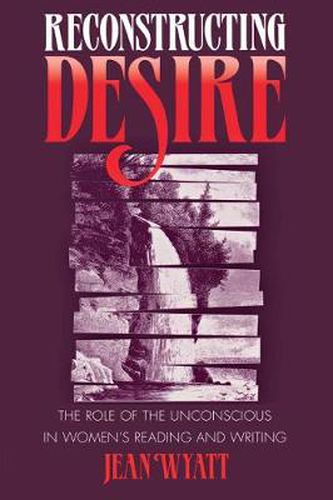Readings Newsletter
Become a Readings Member to make your shopping experience even easier.
Sign in or sign up for free!
You’re not far away from qualifying for FREE standard shipping within Australia
You’ve qualified for FREE standard shipping within Australia
The cart is loading…






This provocative study explores the function of the unconscious in reading and creative processes. The book asks if reading can change the reader and if women, through reading, can change the unconscious fantasy structures that govern desire. Using models of the unconscious developed by Freud, Lacan, Kristeva, Cixous, Nay, and Chodorow, Wyatt explores the complex interactions between a text and a reader’s unconscious. She theorizes specific processes whereby young readers can assimilate dynamic images of female autonomy in Heidi,
The Wizard of Oz, and Little Women.
By tracing the imprint of father-daughter relations on women’s unconscious fantasy life, Wyatt seeks to explain the hold of romantic love fantasies like Jane Eyre over many female readers. She looks to contemporary novels for alternative fantasies: to female artist novels by Lessing, Drabble, and Walker for fantasies of sexuality nurturing creativity; and to the flexible family circles of Beloved and The Color Purple for alternatives to patriarchal family arrangements. Wyatt argues that novels like The Awakening and Housekeeping that reflect and transform readers preoedipal fantasies offer women radical alternatives to dominant cognitive and social structures.
$9.00 standard shipping within Australia
FREE standard shipping within Australia for orders over $100.00
Express & International shipping calculated at checkout
This provocative study explores the function of the unconscious in reading and creative processes. The book asks if reading can change the reader and if women, through reading, can change the unconscious fantasy structures that govern desire. Using models of the unconscious developed by Freud, Lacan, Kristeva, Cixous, Nay, and Chodorow, Wyatt explores the complex interactions between a text and a reader’s unconscious. She theorizes specific processes whereby young readers can assimilate dynamic images of female autonomy in Heidi,
The Wizard of Oz, and Little Women.
By tracing the imprint of father-daughter relations on women’s unconscious fantasy life, Wyatt seeks to explain the hold of romantic love fantasies like Jane Eyre over many female readers. She looks to contemporary novels for alternative fantasies: to female artist novels by Lessing, Drabble, and Walker for fantasies of sexuality nurturing creativity; and to the flexible family circles of Beloved and The Color Purple for alternatives to patriarchal family arrangements. Wyatt argues that novels like The Awakening and Housekeeping that reflect and transform readers preoedipal fantasies offer women radical alternatives to dominant cognitive and social structures.